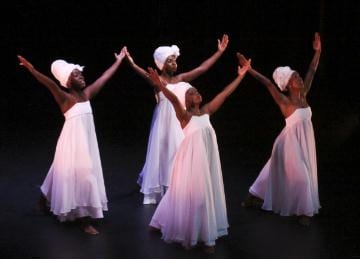If they have keen eyes and sharp memories of the early 1990s, audience members attending a special dance performance to kick off Black History Month in Toronto may notice some strikingly familiar moves.
Maybe a dancer giving “good face.” Perhaps another striking a pose. Or possibly a performer taking to the floor to do a variation of the duck walk.
The dance crew performing in Tribute: A Moving History of Canadian Blacks in Dance will give the show some attitude by including elements of voguing, a dance form whose origins go back decades but hadn’t penetrated mainstream culture until Madonna released her 1990 record Vogue.
But don’t think voguing is making a comeback. It’s not.
That’s because it’s never disappeared. Actually, over the past couple of decades respect for this dance form has grown, thanks in part to the involvement of queer black people in professional dance, says Kevin Ormsby, the show’s choreographer.
”Whether or not it’s recognizable to the audience as [voguing] is a different situation. But for me, as a choreographer, I can see those particular elements and actually smile and be proud that the form has now been accepted as a formalized form of training and/or form of presentation in dance,” says Ormsby, who is black and openly gay.
Voguing became popular for queer black people as a result of their need to find a safe place to exist, Ormsby says.
Having two identities – queer and black – they faced threats to their sense of security from both homophobia within the black community and racism outside, Ormsby says. Many found their safe place in New York’s houses, where voguing was taught, and at kiki balls, he says.
(New York’s ball scene, in which black men transform themselves into fierce women and strut down runways, with houses competing against one another, have been around since the 1920s.)
“What expressions come out of that safe space? I think voguing comes out of that expression,” Ormsby says, noting that voguing didn’t originate specifically with queer black dancers. He says that it came from African and Latino immigrants who were living mainly in New York and that while some may have been queer, not everyone was.
Ormsby points out that queer artists have made contributions to dance beyond helping voguing gain acceptance. But he says those contributions are difficult to quantify. “Gay blacks do hip hop, gay blacks do jazz, gay blacks also do ballet. Gay blacks do a lot of things,” says Ormsby, who is artistic director of KasheDance, a company he founded. “The most important act or contribution is that gay men are participating, so the space becomes open in many respects.”
The purpose of Tribute, meanwhile, is to present a glimpse of the history and artistry of all black people involved in Canadian dance, and not those specifically from the lesbian, gay, bisexual and trans communities.
A multimedia event highlighting various dance forms, the show pays tribute to nine black dance artists who were chosen from across Canada for their contributions to dance.
These include Len Gibson, who choreographed and appeared in one of the first musical-variety TV series to feature an interracial cast; Kevin Pugh, who, as principal dancer with the National Ballet of Canada, was one of the biggest dance stars of the 1980s; George Randolph, who was principal dancer with Les Ballets Jazz de Montréal and the Alvin Ailey Repertory Ensemble, as well as founder and president of the Randolph Academy for the Performing Arts; and Jean Sheen, who trained in Trinidad and Tobago before moving to Toronto, where she founded Ontario’s first Caribbean dance school, Chissamba Chiyuka Arts Inc.
Members of the dance crew, who will perform the works of those honoured, are pre-professional or semi-professional dancers from Toronto, ranging in age from 11 to 22 years old.
“They were chosen for that idea of continuing the legacy of black dance in this country,” Ormsby says. “They’ve been training for many years in different dance forms. So this year we chose to profile them as the future generations of what black dance will be in this country.”
Tribute is the 18th annual showcase presentation put on by dance Immersion, a Toronto organization that produces and promotes dancers and dances of the African diaspora. It’s part of Harbourfront Centre’s NextSteps national dance series.

 Why you can trust Xtra
Why you can trust Xtra


